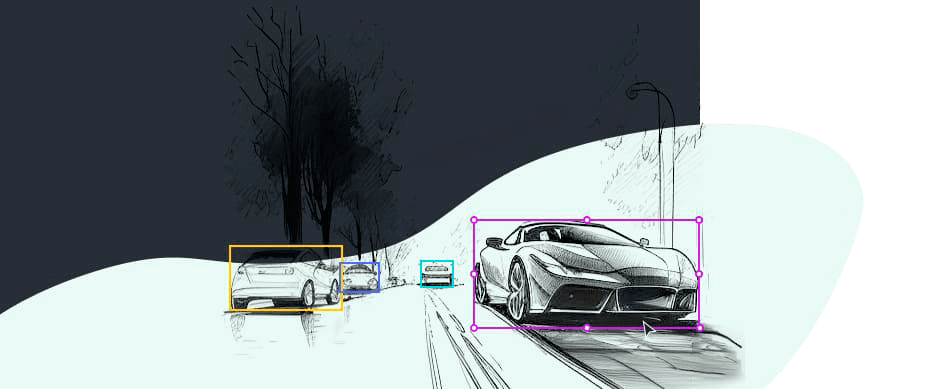Medical & healthcare
Keylabs: advancing medical & healthcare AI with precision data annotation.
The medical industry is constantly evolving, and with the advancement of technology, it has become more data-driven than ever before. With the rise of machine learning and artificial intelligence, there is a growing need for large amounts of accurately annotated medical data to train these algorithms. This is where data annotation and Keylabs data annotation platform come in.
Data annotation is the process of labeling and categorizing data to make it usable for machine learning models. In the medical industry, data annotation is crucial for various imaging modalities such as CT and MRI scans, dental images, mammography, ultrasound, and X-rays. Accurate annotation of medical data can help in early detection of diseases, accurate diagnosis, and personalized treatment plans.
In this article, we will explore the importance of data annotation in the medical industry, how it is being used, and the benefits it provides. We will also look at some of the challenges that come with data annotation in the medical field and how they can be overcome. Join us as we delve into the world of data annotation and its crucial role in the medical industry.
Data annotation tools
Some common applications of medical AI include:
CT & MRI scans annotation
Medical imaging annotation is the process of labeling CT and MRI scans to train (AI) algorithms for medical image analysis and diagnostics. The labels are used to identify various structures, such as bones, organs, or tumors, within the images.
Semantic segmentation is a type of medical imaging annotation that partitions raw CT and MRI image data into structured and meaningful regions.
Annotated medical imaging data can help improve the accuracy of deep-learning models to predict cancer or other chronic diseases.
Dental image annotation
Dental artificial intelligence (AI) applications require quality training data that experts annotate for accurate diagnoses. One effective method of obtaining high-quality training data is through dental image annotation. Precisely annotated images can be used to train AI models to recognize and interpret dental imaging information automatically, which improves the accuracy, precision, and reproducibility of diagnoses.
AI in dentistry is dependent on machine learning algorithms that use visual recognition techniques to analyze medical images effectively. Annotating digital dental images leads to automatic interpretation by AI systems after training on large volumes of highly annotated dental databases.
Dermatology
Data annotation tools help train AI systems differentiate between different types of skin conditions accurately while generating reports using images obtained from patients' scans or digital records. With proper annotation, physicians can more quickly diagnose patients which results in fewer errors.
Accurate data annotation helps train algorithms effectively by providing quality datasets ensuring that professionals are able to give correct diagnoses promptly for better treatment outcomes. Therefore it's important for healthcare providers to deploy effective data annotations paired with machine learning for optimal results across all fields of medicine including dermatology.
Mammography
Data annotation can help train AI algorithms to accurately identify suspicious areas in mammograms. By analyzing large datasets with annotated images, these algorithms can learn patterns and warning signs that doctors may have overlooked. This can save doctors time when examining new cases, leading to quicker diagnoses and improved patient outcomes.
Additionally, crowdsourced data annotation strategies are becoming increasingly popular for labeling medical imaging data like mammograms because it is cost-effective and scalable compared to manual labeling done by physicians or radiologists.
Ultrasound
Ultrasound-guided needle biopsy is a commonly used diagnostic technique in the medical industry. Image annotation involves labeling data to train machine learning models, which helps to improve accuracy and predictions for disease diagnosis.
Ultrasound imaging is essential in assessing various medical conditions including cancerous growths and blood vessel evaluations. Data annotation can provide helpful labels that assist both technicians and software engineers in understanding these images with precision leading to faster diagnoses and ultimately improved outcomes for patients.
X-Ray
The annotation of X-ray images provides computers detailed insight into anatomy that is present on radiographic films.
Accurate annotations are also vital for improving the performance of AI models in real-world scenarios. These annotations provide the necessary ground truth information that helps in evaluating the performance of the algorithms and ensuring their reliability.
Key features
There are several key features that a robust data annotation tool for medical should possess:
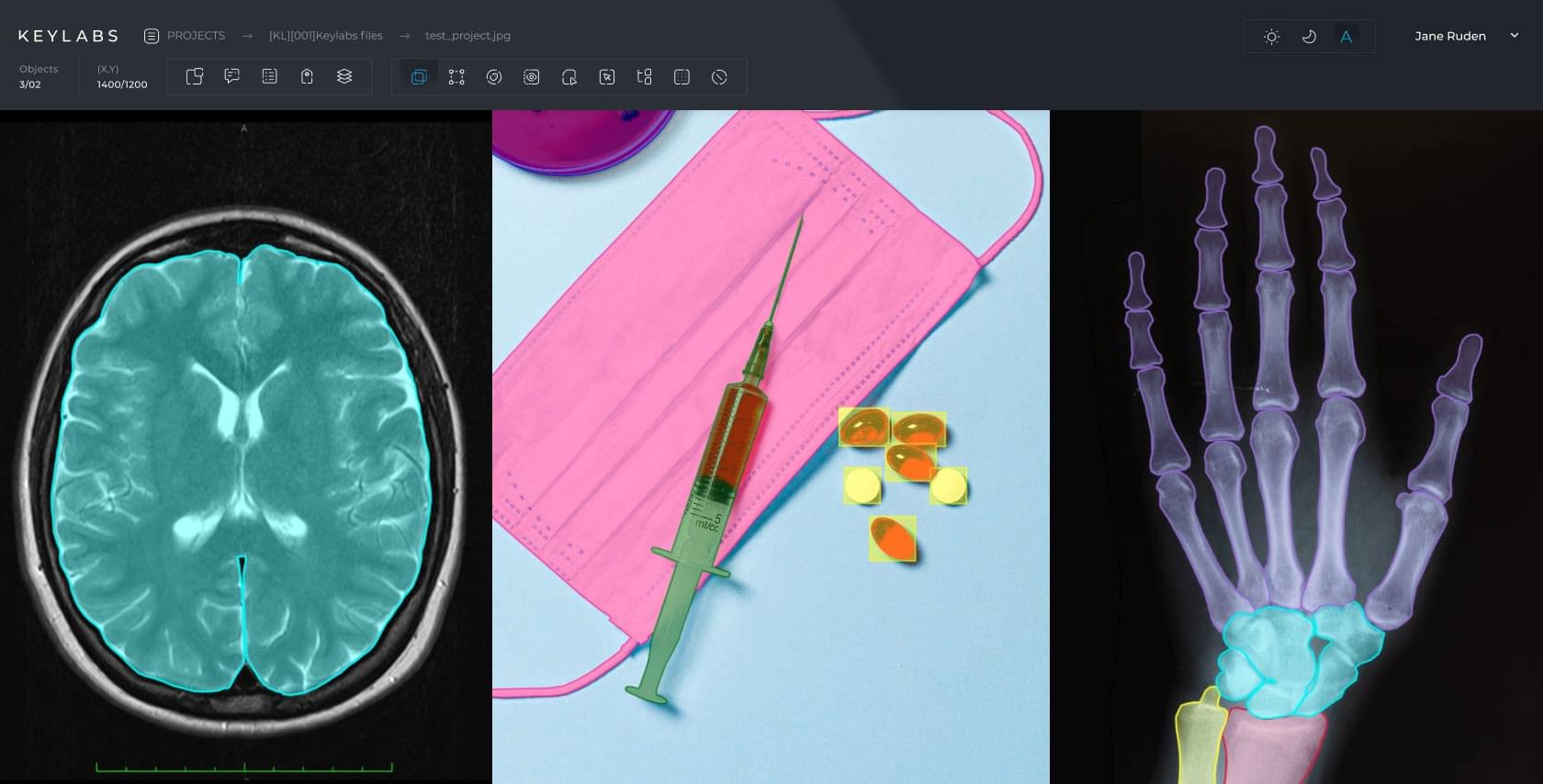
Versatility
The tool should be capable of handling different types of data, including 2D and 3D images, videos and point clouds generated by LiDAR sensors.
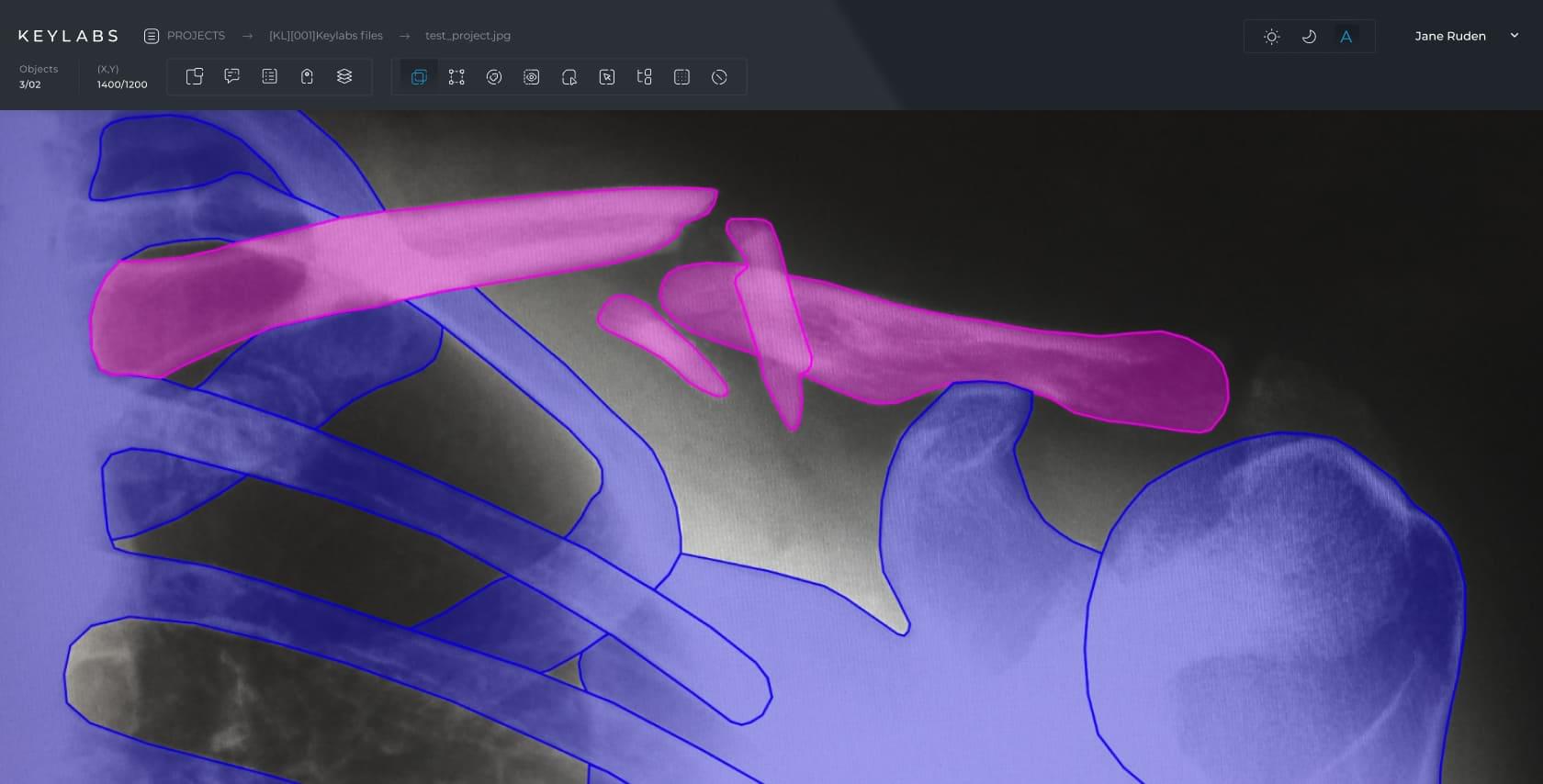
Precision
High-quality annotations are crucial for the accuracy of AI models in aerial management and disaster management. The tool should enable precise labeling of objects and features, minimizing the chances of misinterpretation.
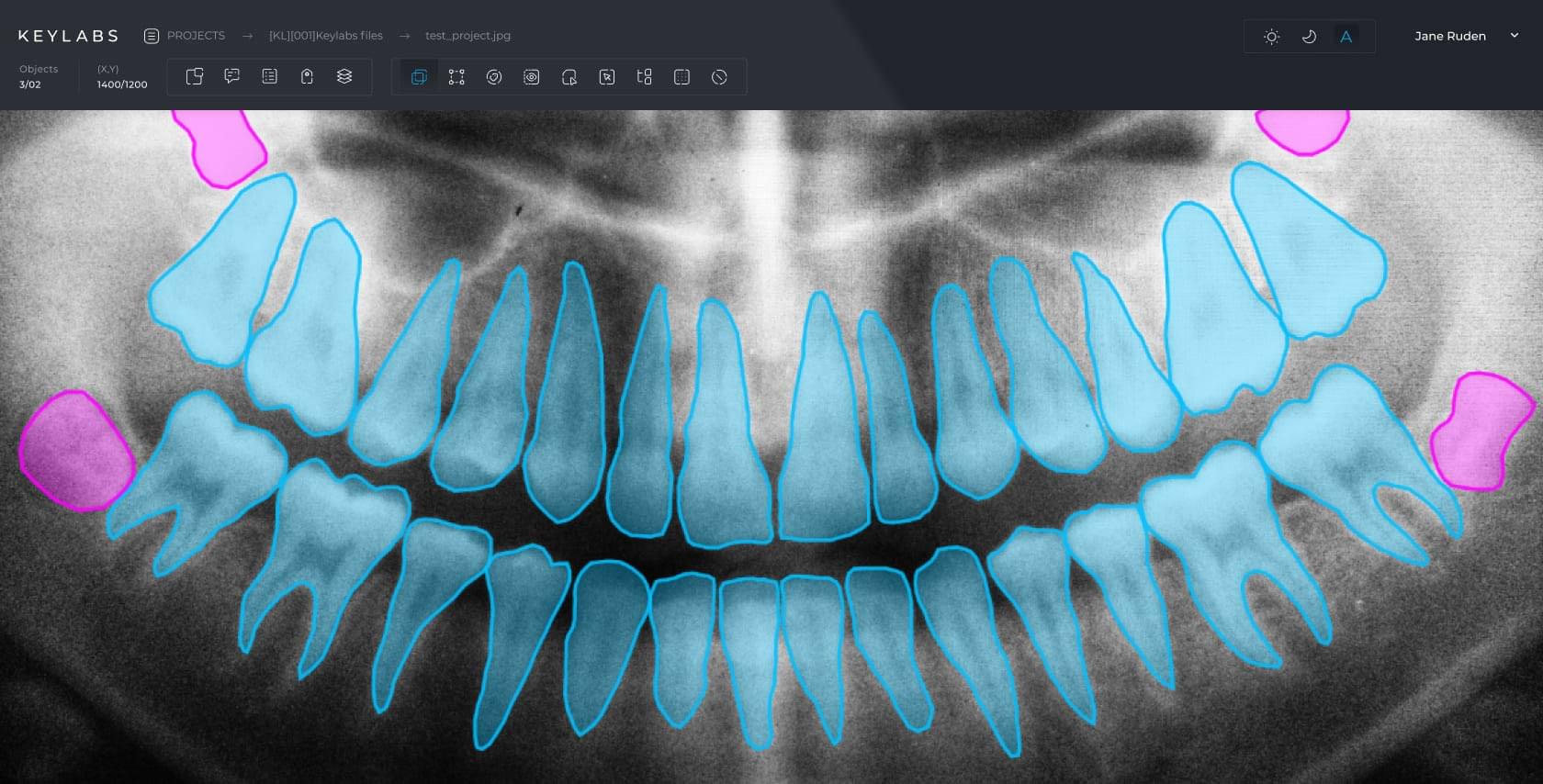
Scalability
A data annotation tool should be scalable to handle large datasets efficiently, streamlining the annotation process and reducing the time required for model training.
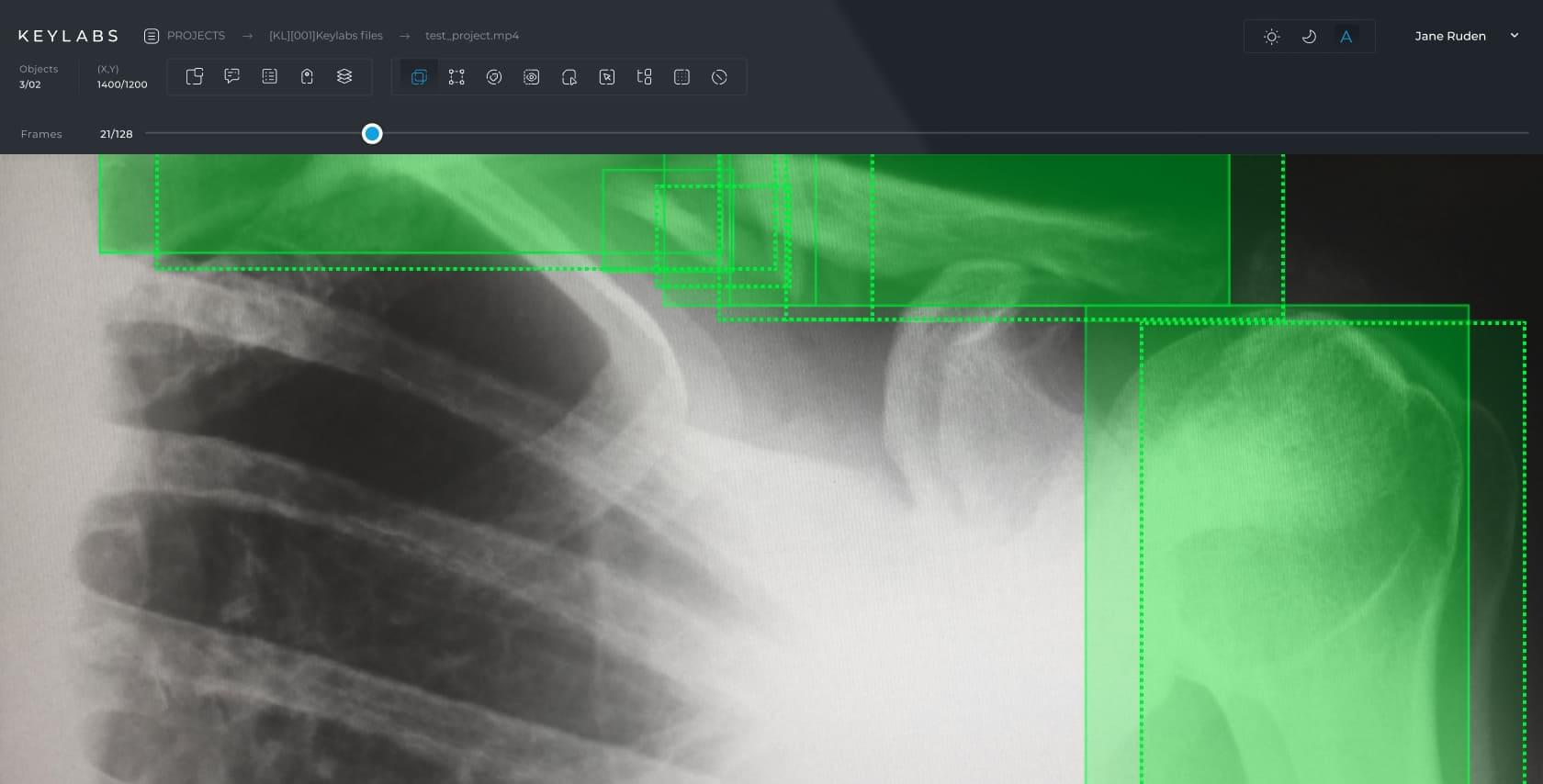
Automation
AI-powered data annotation tools can leverage machine learning algorithms to automate parts of the annotation process, speeding up the workflow and increasing overall efficiency.
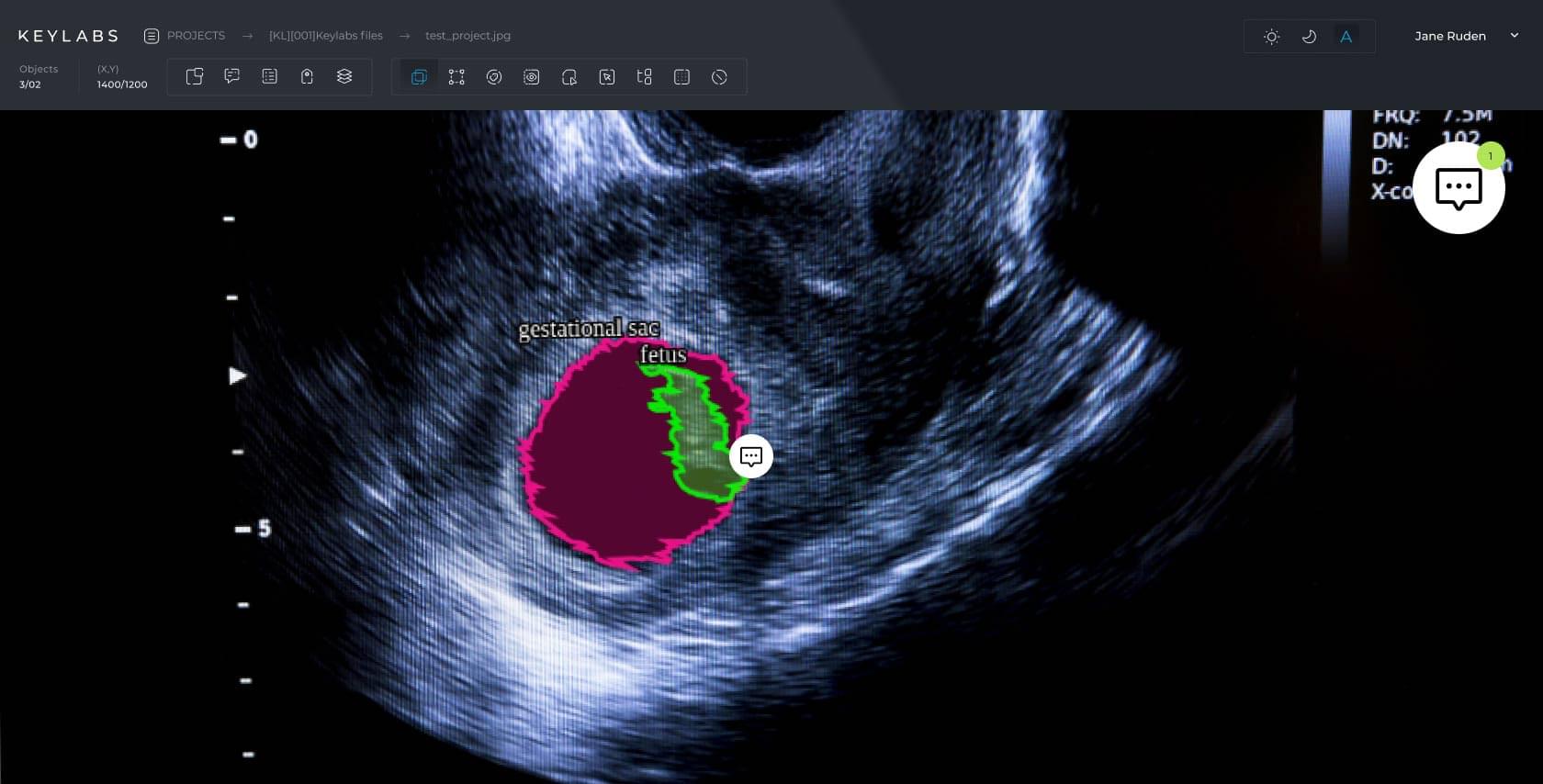
Collaboration
A good data annotation tool should facilitate collaboration among team members, enabling multiple annotators to work together on the same dataset. This ensures consistency in labeling and accelerates the annotation process.

Quality control
To ensure the highest level of accuracy, the tool should have built-in quality control features that allow for easy review and verification of annotated data. This helps maintain data integrity and improves the overall performance of the AI models being trained.

Customization
The annotation requirements may change or become more complex. A flexible data annotation tool should allow for customization to meet the unique needs of each project and adapt to new challenges in the industry.
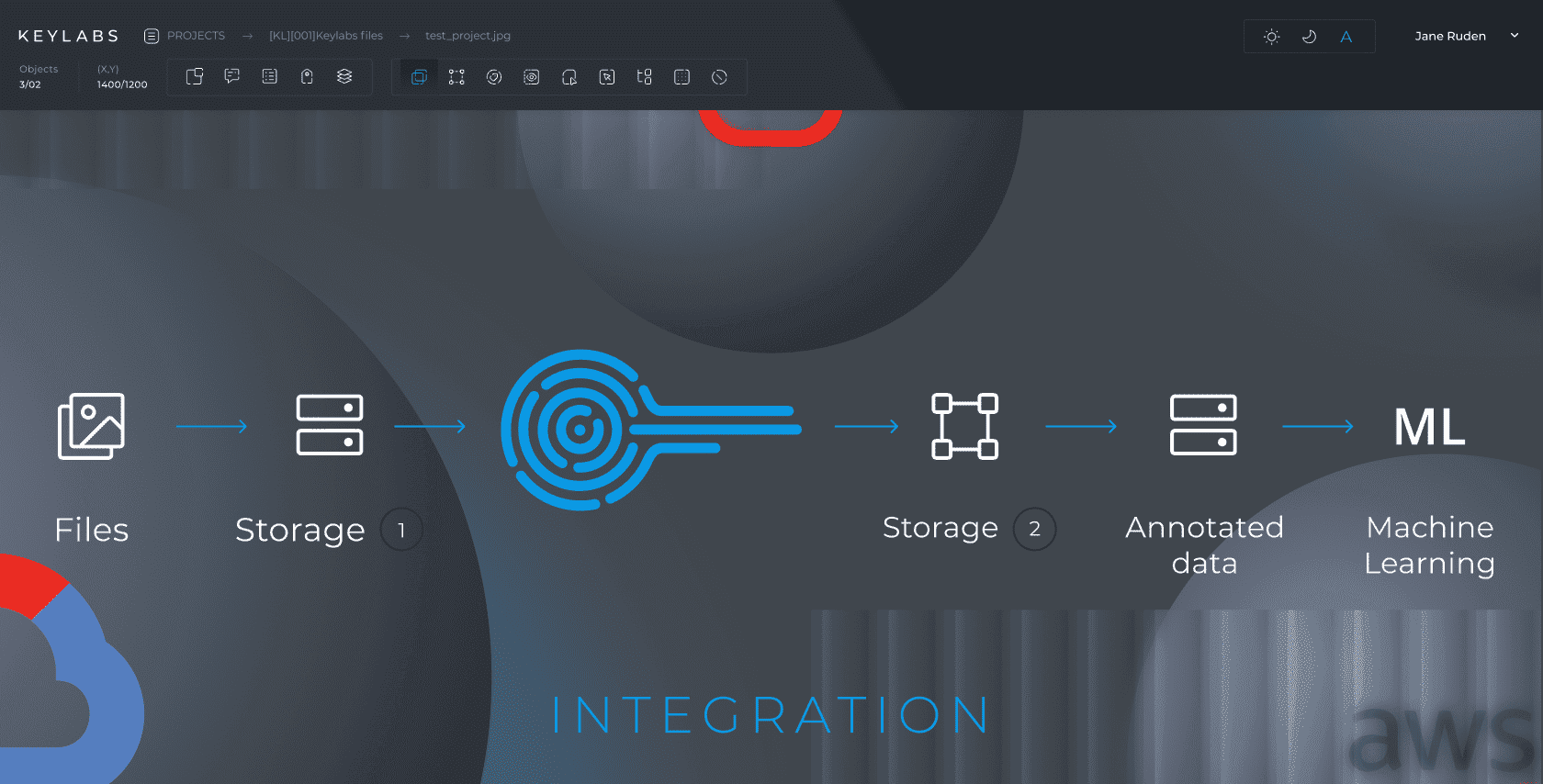
Integration
The data annotation tool should be able to integrate seamlessly with various machine learning frameworks and platforms, making it easier for developers to use the annotated data for model training and evaluation.

Data Security
A data annotation tool must prioritize data security and privacy, ensuring that the information is protected at all stages of the annotation process.
Versatility
Precision
Scalability
Automation
Collaboration
Quality Control
Customization
Integration
Data Security
Use cases

CT & MRI scans annotation
Keylabs excels in annotating CT and MRI scans, providing detailed insights for accurate diagnoses and advanced medical research.
Dental image annotation
For dental image annotation, Keylabs delivers precision, aiding in accurate dental assessments and treatment planning.
Mammography
Keylabs enhances mammography analysis with meticulous annotation, contributing to early and accurate breast cancer detection.
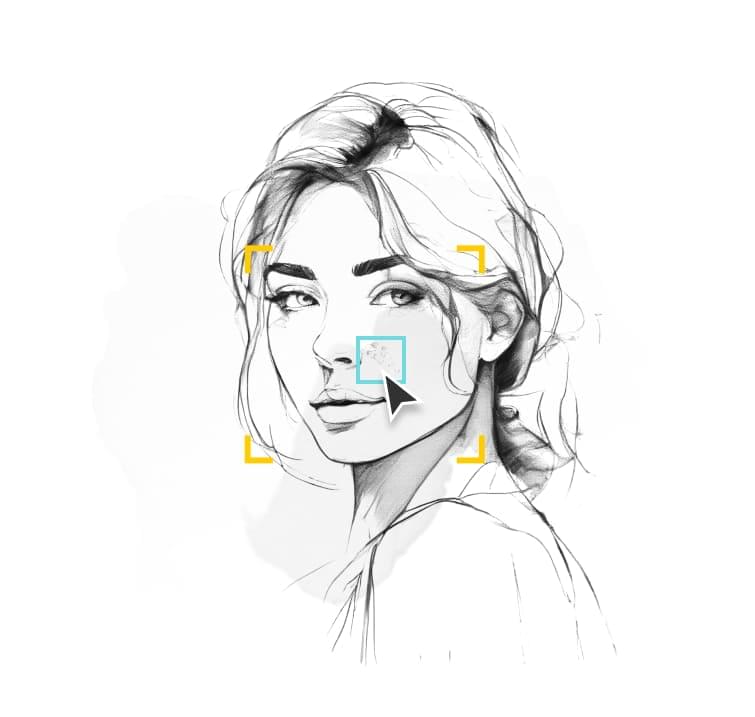
Dermatology
Keylabs' annotation capabilities assist in precise skin condition analysis, improving diagnosis and treatment outcomes.
Starter’s guide


Data security
Using the Keylabs annotation tools comes with a commitment to data safety. Keylabs employs a range of security measures to protect valuable and sensitive data. This includes comprehensive infrastructure security if you choose to access Keylabs through the cloud. Alternatively, Keylabs can be installed on premises, guaranteeing you total control over access. We will continue to emphasize data protections as a priority by utilizing a diverse array of security measures and industry best practices.
Top Features
Keylabs is created as a platform that incorporates state-of-the-art, performance oriented tools and processes.
ML assisted data annotation
ML assisted data annotation
Keylabs is a streamlined data labeling platform with AI-enhanced annotation.
Tailored for easy Integration with any client model and time & cost efficiency.
Keylabs’ advanced algorithms provide quick, accurate data prep for superior model training.
3D tool
3D tool
Keylabs is a super-fast tool, soaring through Lidar files at ultra speeds. It seamlessly handles all file formats, ensuring a consistent, efficient workflow regardless of file complexity.
High performance video annotation
High performance video annotation
With the Keylabs platform's technical and software capabilities, video annotation is highly accurate (precision of up to 99,9% depending on project needs) and fast. Thanks to the geolocation adaptation of servers, even big-sized videos are loaded and processed quickly.
Magic wand
Magic wand
Speeds up the annotation process by automatically detecting closed shapes of the same color or color gradient in a highly precise manner.
Object interpolation
Object interpolation
Object interpolation in the data annotation process is used to accelerate the annotation of objects across a sequence of frames in video annotation.
Annotators label the shape of an object in the first and the last keyframe of desired sequence and the object interpolation algorithm automatically generates the labels for the object in the intermediate frames.
It saves time and also ensures consistent labeling across frames.
A-Z order
A-Z order
Objects can be placed on different leveled layers, which allows operators to correctly detect and work with those objects and their boundaries.
Multilayer annotation
Multilayer annotation
Multilayer annotation is a complex yet valuable process in data annotation where different types of materials are layered onto a single item.
This allows the addition of multiple, diverse annotations to a single piece of data such as an image or video frame.
Each layer might provide a different dimension of information, enriching the dataset with multiple facets of detail.
This allows the addition of multiple, diverse annotations.
Object linking
Object linking
Object linking in the data annotation process is a valuable function that connects different instances of the same object across multiple frames or images.
For example, in video annotation, an object appearing in different frames is linked throughout the video, ensuring the continuity and consistency of the annotation.
Hierarchical atributes
Hierarchical atributes
The attribute is a type of tag that can be applied to a class or property to provide metadata about it.
Using attribute hierarchies, it is possible to define structures of metadata for each item in dataset.
It is achieved by using dependent attributes, which allows logical forming of metadata information for frame or object individually.
Workflow and task distribution
Workflow and task distribution
Workflow includes custom stages of one of 4 project stage types: annotation, verification, miscellanious and final.
Good workflow and task distribution ensure that the data annotation process is smooth, efficient and completed within the required timeframe.
Data management

Data management
Data management in the context of the data annotation process is about strategically handling and organizing the data throughout its lifecycle.
Effective data management helps to uphold data integrity and ensure that the final annotated data is accurate, consistent and ready for use in AI and machine learning projects.
Attributes interpolation
Attributes interpolation
Attributes metadata can also be interpolatable (changed) between the frames. For instance, In a self-driving car video annotation, this can label a car as a "sedan" going "30 mph" in the first frame & automatically estimate its type & speed in subsequent frames until the next key frame. This eliminates the need for manual annotation in each intervening frame, saving time & effort.
Annotation types
Keylabs gives developers access to a full suite of annotation techniques:
Bounding Box
A rectangular box defined by coordinates that encapsulates an object of interest within an image
Oriented bounding box
A rotated rectangle that tightly encloses an object, accommodating its orientation and shape more precisely than a standard bounding box
Polygon
A closed plane figure made up of several line segments that are joined together, used to define irregular shapes in an image
Points
The Point Annotation Tool places dots on images or videos, ideal for highlighting details like facial features, expressions and body postures
Lines & Multilines
A data annotation tool used to draw single or multiple interconnected lines on images, capturing linear features or paths
Skeleton
A thin version of a shape, representing its central structure and providing a simplified representation of its form, commonly used in understanding object morphology or structure
Instance Segmentation
The process of classifying and delineating each individual object instance in an image
Semantic Segmentation
The classification of each pixel in an image based on its semantic category, without distinguishing between individual object instances
Bitmask
A binary representation where each pixel value indicates whether it belongs to the object (1) or the background (0)
Cuboid
A 3D rectangular prism annotation, often used to represent objects in spatial dimensions
Mesh
A collection of vertices, edges and faces that define the shape of a 3D object in space, often used in 3D modeling and computer graphics
3D Point Cloud
A collection of data points in a three-dimensional coordinate system, representing the external surface of an object
Custom
A tailored data annotation tool designed to cater to specific annotation needs not covered by standard tools


